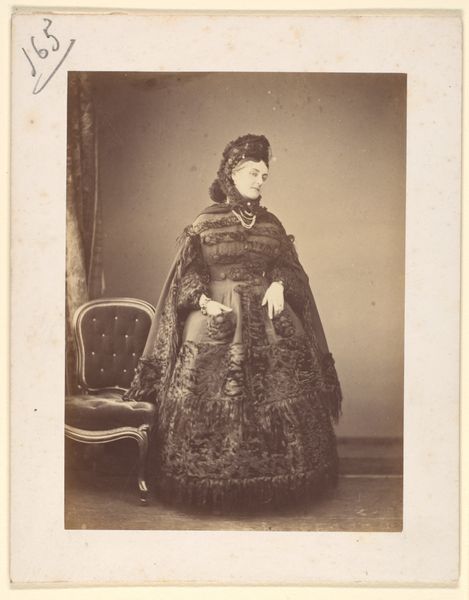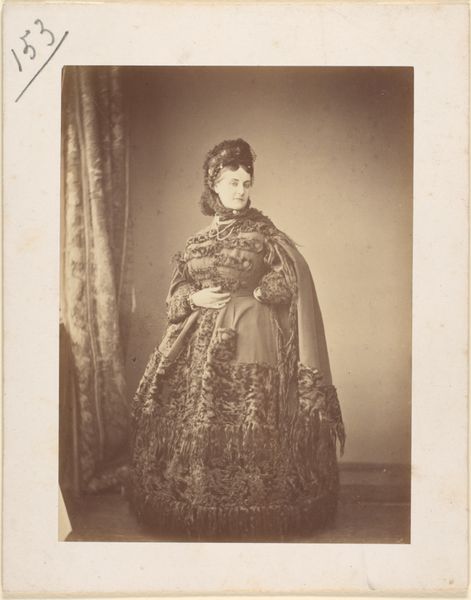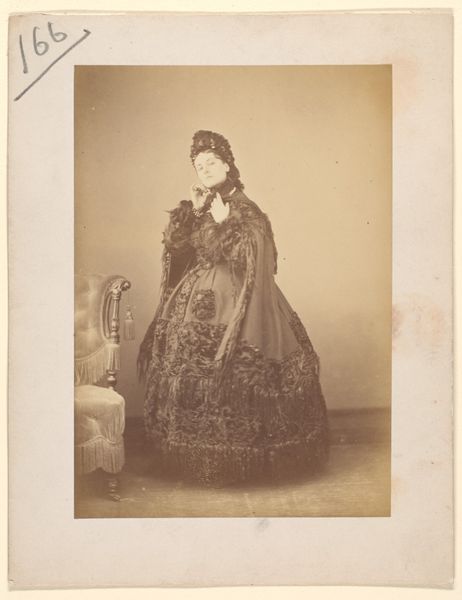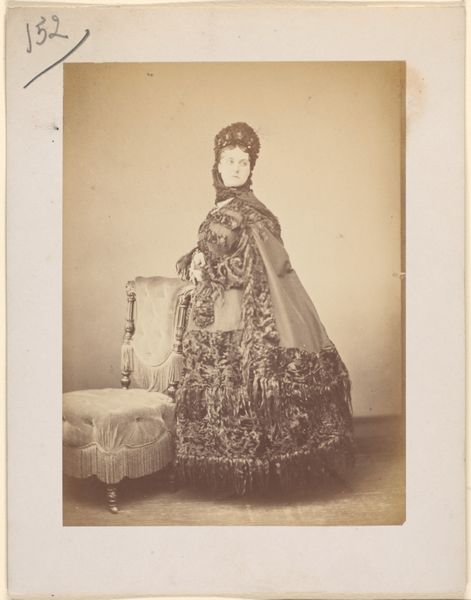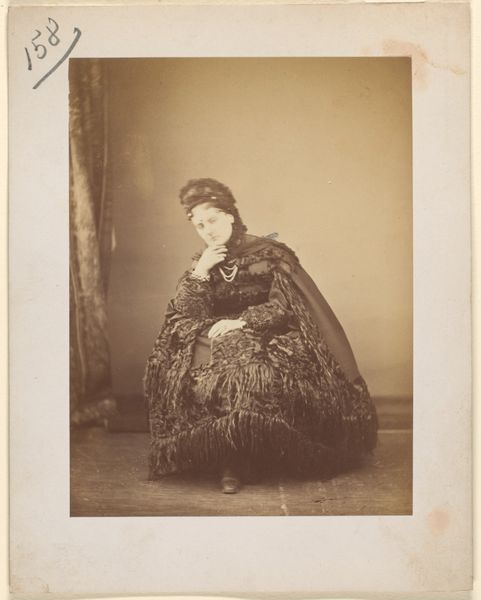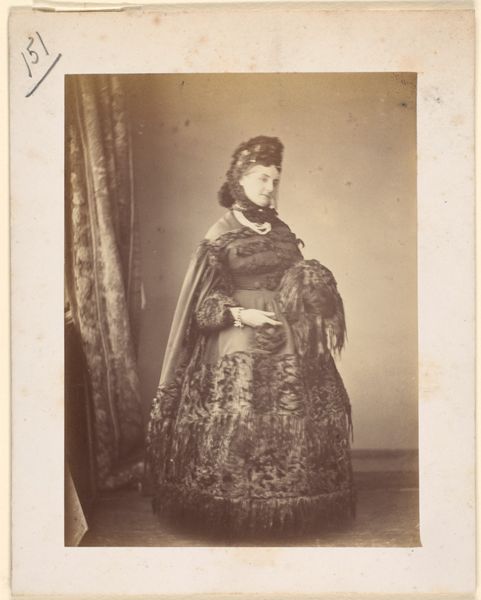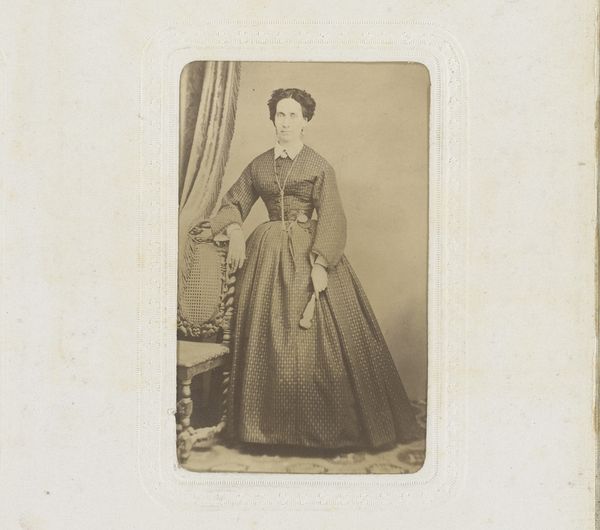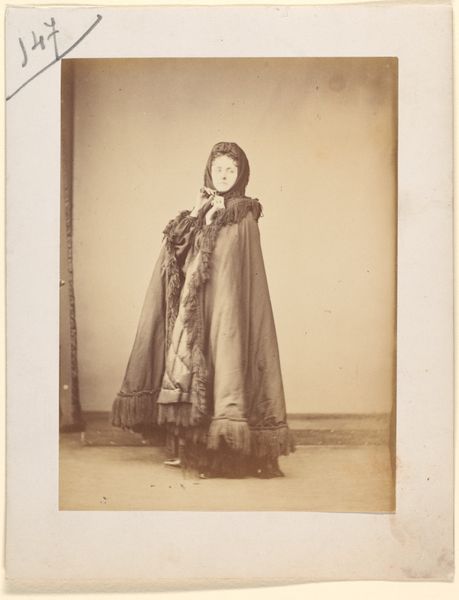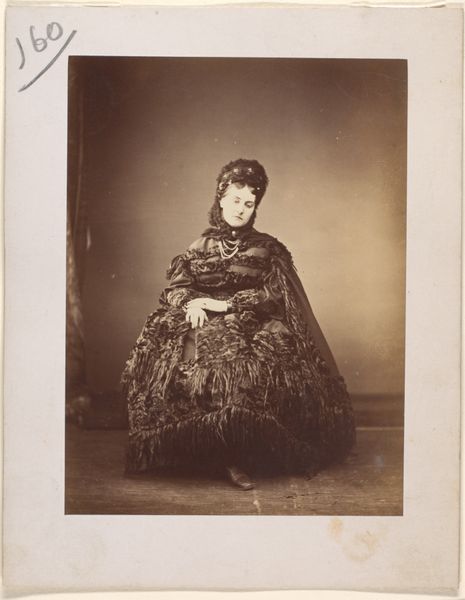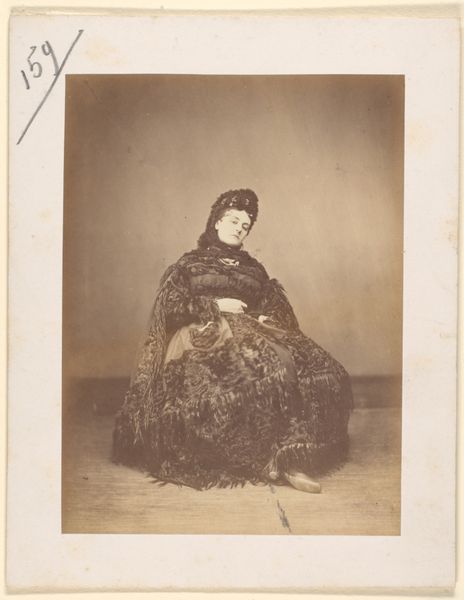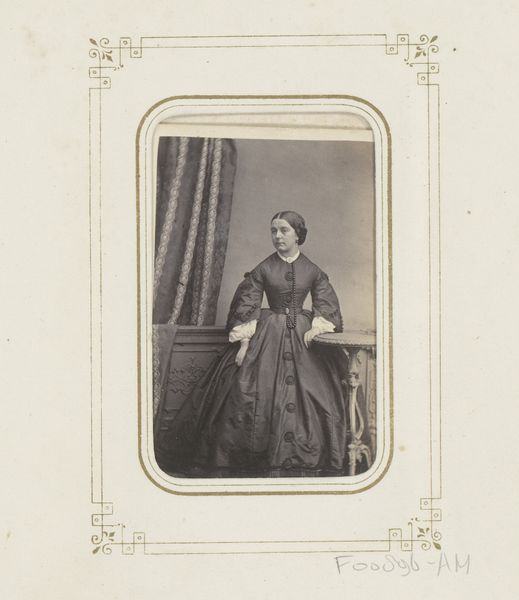
#
portrait
#
photo of handprinted image
#
aged paper
#
toned paper
#
photo restoration
#
ink paper printed
#
parchment
#
old-timey
#
19th century
#
men
#
watercolour illustration
#
watercolor
Copyright: Public Domain
Curator: Let's take a moment with this striking portrait, "Le Caracul," or "The Astrakhan," created in the 1860s by Pierre-Louis Pierson. It’s currently held in the collection of the Metropolitan Museum of Art. Editor: My first thought? Opulence. She's swimming in fabric, dripping with what I imagine were wildly expensive textiles. There's a kind of stifled glamour about her; regal, but slightly...suffocated, maybe? Curator: Precisely. Pierson was closely associated with the French Imperial Court. This was an era obsessed with visual representation, and the Imperial family especially understood the power of photographic image-making to create a certain...narrative, shall we say? Editor: A narrative indeed! I see the "narrative" in every single swathe of that heavy dress. I mean, look at the chair next to her—unoccupied, as if daring anyone to sit and chat. There’s distance, a performative grandeur, and also... melancholy. Am I off base? Curator: Not at all. Pierson’s portraits were very carefully staged, reflecting not only the wealth of the subject but also constructing a specific kind of public persona. Remember, photography was still relatively new; this level of manipulation hadn’t yet become commonplace. Editor: I guess she understood how a good image could speak volumes without her having to utter a word. And look at the toning of the paper – the sepia hues lending an air of faded memory, even in its time, suggesting a glorious past. There's almost a theatrical quality, don't you think? Curator: Absolutely. The controlled lighting, the staging… these elements highlight how photography became intertwined with performance and the projection of power in the 19th century. But there's also an attempt to define status in an era of tumultuous social change, which is a recurring motif across Europe then. Editor: A gilded cage perhaps. It makes me wonder, what would *she* say if she could tell us what it really felt like to be her, posed like that? Trapped, admired, or just… numb? It makes me wish photographs could actually talk. Curator: Well, thankfully, art history offers some alternative ways of hearing voices from the past, although sometimes that can take years of study to finally appreciate that discourse. Editor: Very true. All that study makes encounters like this much more precious.
Comments
No comments
Be the first to comment and join the conversation on the ultimate creative platform.
